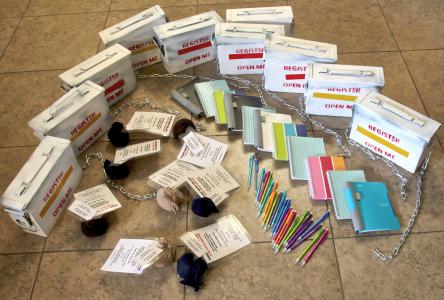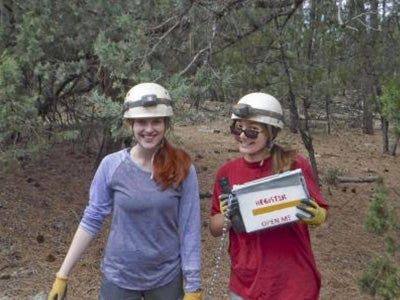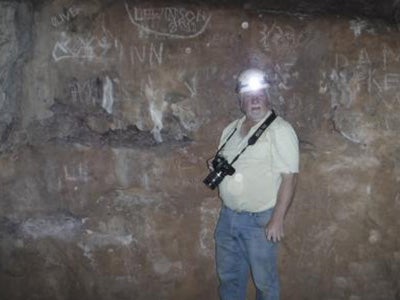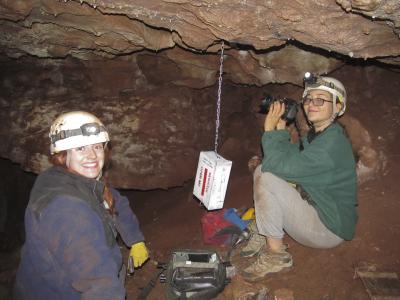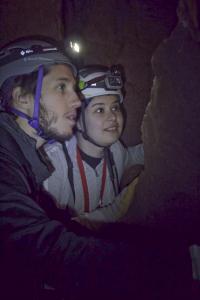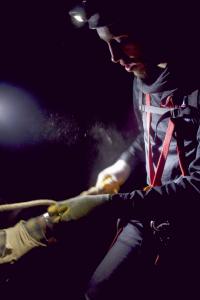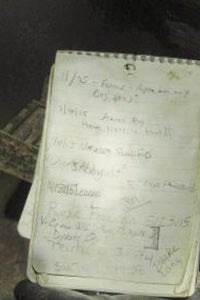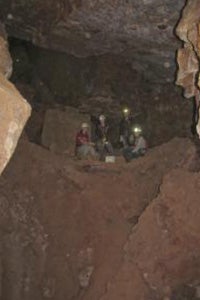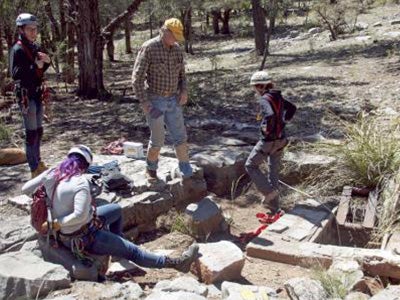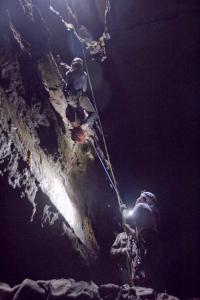The purpose of this project is to maintain the registers in eight popular Payson-area caves over the course of one year. This involves collecting and digitizing data from old registers, placing new registers, and maintaining the condition of those new registers.
The digitized data will help to Forest Service to better understand who visits these caves, how many people visit them, and what times of year are busiest. In addition to the registers, conservation work will be done in the form of removing trash and graffiti from these otherwise pristine environments. — Brooke Kubby
March 5, 2016
The project is starting to get off the ground. I don't think I'll be in need of a mentor, as I seem to already have one Ray Keeler. Ray has been very helpful. He got me in contact with the Forest Service and proofread the letter I sent them. He also sat down with me and showed me detailed maps of the caves I intend to visit, gave me some suggestions on how to effectively organize a trip, and provided some tips on how to create reports for those trips.
I still need to decide on actual dates for these trips and to find volunteers for them, which I plan to do via word-of-mouth and planning with the ASU Outdoors Club.
April 10
This weekend we built 10 register boxes. I bought ten used 30-caliber ammo boxes, which we then retrofitted by spray painting, adding reflective tape, drilling holes, adding chains, stenciling, etc. We then filled socks with desiccant and added laminated messages discussing conservation.
To date I have spent $310.90. That is $10 over-budget for supplies; however, since I am visiting all eight caves this weekend, rather than in separate trips, the amount of gas money saved will more than make up for it.This weekend consisted of 42 man-hours of work, split between five people. I will update you after next weekend, when we initially place the boxes in the eight caves.
April 16-17
On the weekend of April 16-17 we placed the first round of register boxes. The goal was the place all eight registers, but it was only possible to place six.
The first day involved horizontal caves with the help of Ray Keeler (President of the Central Arizona Grotto), Brittany Kaminsky (ASU Biology student), and Pete Aleshire (Editor of the Payson Roundup). The four caves we visited were Scout Cave, Ebony Cave, Juana's Cave and Crinoid Cave.
On the second day, the team consisted of Ray Keeler, Brittany Kaminsky, Cameron Kopas (materials science grad student) and Sasha Poujlivaia (web-app developer). Both Diamond Cave (a sinkhole) and Woman Cave required climbing gear. The additional time required for dealing with ropes and gear meant that we could only complete two of the four planned caves.
Overall, the original registers were in terrible condition.
The box in Woman Cave was completely filled with water, making the data in the notebook entirely unreadable. Scout Annex did not even have a notebook (just sticky notes), and Scout Cave's notebook was in a state of crumpled disrepair. Juana's Cave and Diamond Cave (both visited infrequently) still had notebooks in good condition, but they were yellowed and damp after years in a humid environment.
Attached are some images from the trip. The next trip will go out sometime in May (possibly early June).
Goals for future trips:
1. Place remaining registers in Barberpole Pit (vertical) and Salamander Pit (vertical; secret location with pristine formations).
2. Create a mud-like concoction of distilled water and dirt from the cave floor to cover up etched graffiti in Ebony, Scout, and Crinoid caves. First we must photograph graffiti and receive approval from the Forest Service to remove it (in the process now). We can proceed once they have determined that it is not historically significant (more than 50 years old).
3. Bring in a team for trash pickup in Scout, Crinoid, and Diamond caves.
4. I am interested in researching the composition of Ebony Cave (so named because it is coated in a mysterious black substance), as well as recording water levels for its pools. The pools have been drying up for decades and I am interested to know why.
I am so grateful for this opportunity to assist in the conservation of these unique environments, and to learn the leadership skills required for projects in the future.
